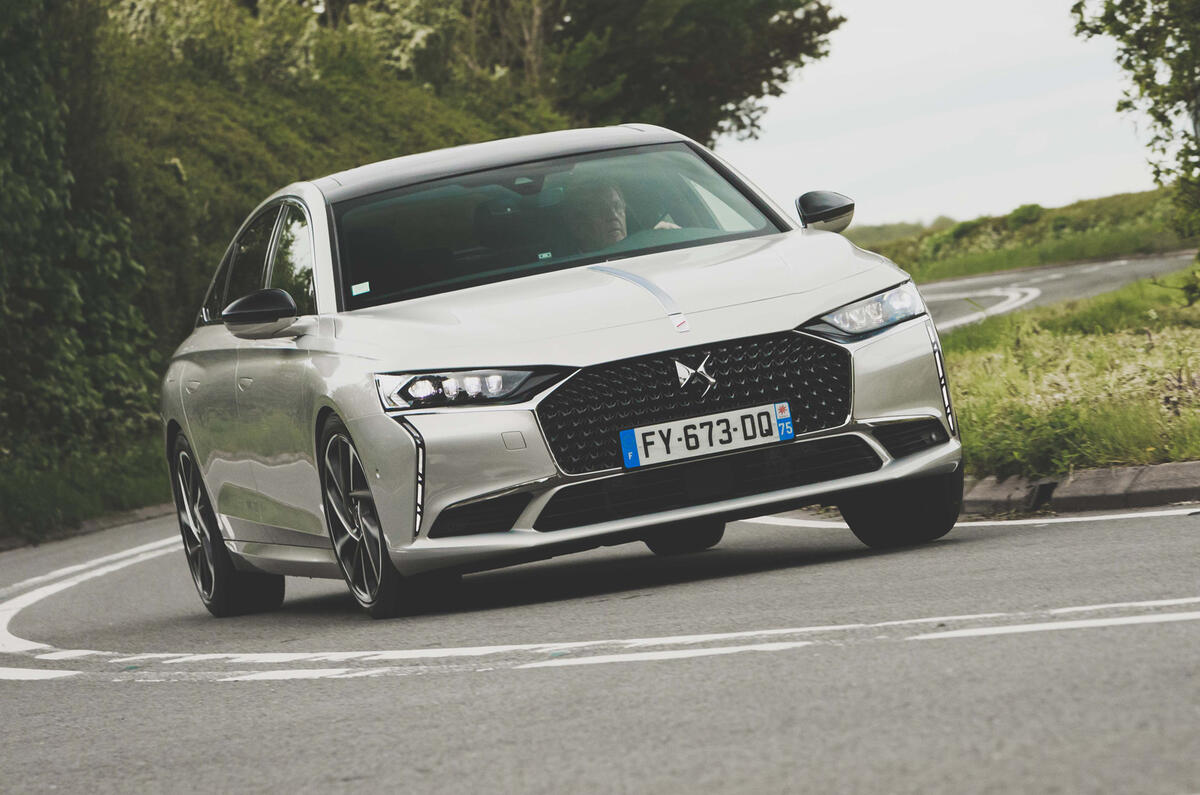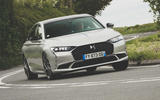What is it?
Before you can mount any kind of serious attack in life or business, you need a leader, which is why the UK team seeking to establish a foothold for Stellantis’s luxury DS marque in this country are keen (and somewhat relieved) to launch their DS 9 flagship model, due in showrooms in September.
It’s an E-segment four-seat saloon, sized and pitched against BMW’s 5 Series and Audi’s Audi A6. Although DS’s UK boss, Jules Tilstone, isn’t bidding to match those majors in volume (success will be measured “in hundreds”, he says), the new model undoubtedly brings a better shape to the whole DS range, which will now consist of four models (DS 3, 4, 7 Crossback and 9), and sharpens the marque’s offer of luxury, quality materials, classy customer service and French ‘savoir faire’.
Although DS hasn’t done well so far in this country, its 9 and recently arrived 4 herald a new determination to expand in the UK, a market that spends generously on high-spec cars.
A current total of 28 UK retailers have been established, with more planned. And as well as attempting to offer class-leading customer service, DS intends to trade on its relevance to modern conditions: all models are already available in electrified form, 30% of 2020 customers chose an electrified car and DS’s CO2 fleet average last year was just 83.1g/km, a figure many rivals would die for.
The customer service offer looks real, too. Buyers can specify cars using virtual reality gadgetry, rent cars in a variety of ways, elect to have their DS collected from home or office for servicing, attend privileged events (Harvey Nichols shop-ins, Kew Gardens trips, baking schools) and are very likely to be offered special access to the forthcoming London Formula E race (24-25 July, Excel Centre). Against better-known motorsport names, DS has won the past two years’ Formula E championships.
The 9 is a big car, similar in major dimensions to its A6 and 5 Series rivals, with a 4.93m overall length. It is built on the largest version yet of Stellantis’s EMP2 architecture, giving a generous 2900mm wheelbase whose main effects are to smooth the ride quality, increase rear knee room (class best) and improve the size of the rear doors, which afford better access than many low-roofed rivals.
The car uses a mostly steel monocoque structure with a transverse front-wheel-drive powertrain – in our test car’s case, a 178bhp 1.6-litre four-cylinder direct- injection petrol turbo engine assisted by a 110bhp electric motor. An 11.9kWh battery pack is carried under the rear seats, offering a claimed 34 miles of electric-only range.
There are two trims: Rivoli+, whose all-leather accent is mostly on luxury, and the slightly cheaper but still plush Performance Line+ with an Alcantara interior. A choice of three powertrains is offered with each: a petrol 225 set-up, an E-Tense 225 PHEV and, coming later, a 360 E-Tense 4x4. Our test car was a front-drive E-Tense 225 PHEV Rivoli+.
Prices range at present between £40,000 and £50,000 (our car cost £49,200) but there’s a chance to pay more for an Opera interior that offers ‘watchstrap’ nappa leather for its seats and fascia. And the forthcoming 360 4x4 will be priced well into £50k territory. Even so, for size and equipment, the car compares well with rivals, especially since its Chinese-built quality appears on early inspection to be a good match for that of the Germans and Japanese.



















































Join the debate
Add your comment
I don't get it. Citroen made the 2cv, DS and SM at the same time, and everyone was ok with it. Why does DS need to actually exist? Also, if this will be regarded as a success with sales in the hundreds, why couldn't they just dust off the C6 tooling, and make that again?
I really like it. At £30-35k it would be a great rival to the A4, Passat, Superb and Insignia but the asking price of £49k is way too ambitious to tempt the badge snobs amongst us. Does the average buyer even know that DS is a brand? I doubt it.